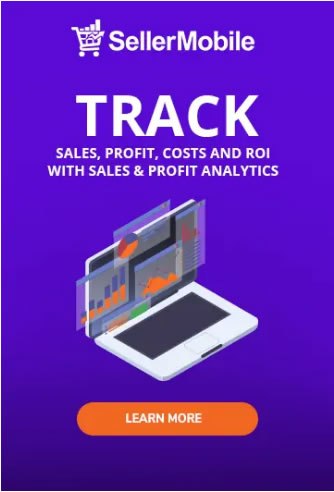Picture this – you are a part of an amazing sales team, and your group has perfected your marketing campaigns, invested in advertising, sales trainings and you’ve received high account rankings through amazing customer feedback. Your team’s efforts finally pay off as you attract potential buyers to visit your Amazon seller account. However, at the point of purchase, they encounter a roadblock. Despite all of your sales efforts, you are not able to close the deal, because the item is out-of-stock!
After you have worked so tirelessly to bait and reel a customer into your seller account, you still lose the sale. Now, the buyer will probably navigate on over to a competitor who is selling the same or similar product, and make the purchase. No matter what path the customer chooses to take, this will now translate into a lost sale for you.
What is a Lost Sale?
By definition, a lost sale is a selling opportunity that you miss out on for items that are out-of-stock. You obviously can’t sell something that isn’t in your inventory. That is why it is essential to analyze your lost sales, learn from your mistakes and replenish your stock to meet projected demand. It is impossible to try to translate all this data on your own for hundreds, maybe thousands, of SKUs. This is when you can utilize a third-party software to analyze lost sales, manage inventory and help you determine and prevent future lost sales.
How to Deal with a Lost Sale
Losing a sale could be a very devastating experience for you and your company. Hindsight thoughts of “I could have done this” or “I should have done” may skim through your mind.
Sulking around will not accomplish anything. What can you do instead to alleviate the negative impact of this situation? You should reflect on this experience, learn from it, and use this experience to improve sales efforts for when another opportunity comes knocking. Learning from our failures can be an opportunity for growth. This is all dependent on our attitudes toward these not-so-frequent downing occurrences.
Steps on How to Analyze a Lost Sale
1. Re-evaluate your Ideal Buying Persona
According to HubSpot, a buyer persona is a semi-fictional representation of who your ideal customers are based on market research and your existing customer analytics. A common mistake companies make is not continually refining their buying personas to better align with their selling opportunities.
Perhaps there are a few main points that the company missed, which can deter a more effective opportunity to engage customers. Revisiting your buyer personas allows you to gain more essential information about your intended buyers and could help you fully understand their journey as buyers.
2. Check Your Previous Steps
Often times, things happen that make us simply get off track of our day-to-day functions. Life usually gets in the way and we sometimes end up misplacing something along the way. What do we do when that happens?
Let’s use our phone as an example. Nowadays, our phones are usually the first thing we check when waking up in the morning, and also the last thing we check before going to bed. We usually have a common spot for it, so we can easily reach out and grab it. Now, what if you come home exhausted and you forget to place your phone in its usual spot? Maybe you left it inside the refrigerator when you were getting a glass of water, or maybe it is still in your briefcase.
When a scenario as such occurs, retracing your steps is the most effective way to locating a misplaced item. In the case of your sales process, revisiting the last decisions you made may help you uncover something you missed before. This could be something that your team missed along the way and may have chased your buyer away to another seller. Always check your previous steps and see where a pitfall may have occurred, that could deter potential future sales.
3. Recognize Your Mistakes and Go from There
As somebody said, hindsight is 20/20. It is much easier to see the mistakes we have committed only after the negative impact has been realized. So, the best way to move forward, is to see the growth potential and learning opportunity it entails and apply the lessons you learn from the lost sale experience. You can always turn this lost sale experience into a lost sale opportunity.





